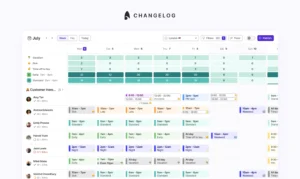
The effect of Covid on workforce planning

At the start of the pandemic as customer service teams migrated to working from home, the need for better planning tools beyond spreadsheets, SQL reports and slack notifications amplified.
In recent years many companies have outsourced their customer service to countries that have developed as large centres for the industry, such as India and South Africa. As lockdowns rippled through the world in different forms and phases, those arrangements led to problems caused by either varying strictness of local lockdowns, lack of work from home provision for agents (such as phones) and unreliable internet connections.
Organisations that have kept their customer service onshore also faced problems. Closing offices often meant phone support was unavailable because calls couldn’t be routed to agents at home. This drove higher inflow to non-live channels, causing email backlogs to lengthen and increasing frustration for customers. Keeping an eye on who was working on what without bringing Orwellian intrusion into employee’s homes also became problematic.
Some companies had to simply put up the white flag, with unnerving notices on their websites that customer service was simply not available except for emergencies.
Forecasting also threw a spanner in the works as suddenly customers had formed new habits and had a different range of questions. E-commerce and online grocery companies experienced a boon in orders, while travel companies were inundated with cancellation and refund requests.
Historical data has always been a minor input to forecasting for start-ups and scale-ups due to rapid growth, but with the onset of an unprecedented societal change, almost every customer service team now had no indicator of how many contacts they could expect. As lockdowns are now being lifted in countries such as the UK and the USA, we’re experiencing another forecasting challenge, where historical data is not a precursor for what to expect, nor are the pre-pandemic contact rates.
In this new environment agile forecasting tools have never been more important. At Surfboard, we’re focused on building this flexibility into our product from day one. Our forecasting is built with both mature businesses and early stage start-ups in mind, using time series models to forecast contacts by identifying trends and recurring patterns over minutes, days, weeks or months. Backward-looking data is only part of the story though, so we work with customers to integrate growth projections, campaigns and changes happening in the business to get a better idea of what to expect in order to delight customers with great service whilst giving the team visibility over their schedule well in advance.
Despite incredible progress from the scientific community that means the end of lockdowns are now in site for many countries, the effects of the pandemic on contact centers will last well into the future. Industries need to be prepared for new levels or types of inflow as behaviours have changed. With the permanent transition to remote or hybrid contact centers, planning and scheduling tools that do not rely on intrusive surveillance will need to be more innovative in tracking metrics compatible with a new way of working and serving customers.



